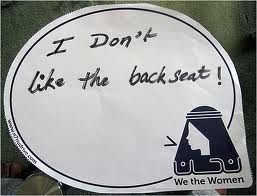There is no asset at any state in the world that is more valuable than its human capital. That is a non controvertible fact that can easily be seen by examining the rationale for policy making at all levels and in all areas including ecological and religious. We cannot, after all, help not being anthropocentric. But what is paradoxical about the above is that the same managers who promote efficient use of resources in all enterprises are loathe, in many societies, to extend an equal opportunity to half of the human family to find fulfillment. It is as if politicians, business managers, religious custodians and heads of households have formed an “unholy alliance” whose only aim is to disenfranchise, marginalize and deny the female gender its humanity and innate rights. The above concerns gain more relevance for the Arabic speaking world and even more urgency for the Lebanese citizen.
It would be helpful to take a slight detour into the field of gender inequality studies before we look at the specific records of the Arab countries. The UNDP has been publishing for over twenty years the Human Development Index, HDI, which has become the golden standard of classifying states by their levels of development. That has caused a monumental shift in how development is measured; we no longer single out the monetary achievement of GDP/capita as being the end all of developmental efforts. Instead the world has come to recognize that “man does not live by bread alone” and so we have created an index that considers another two important fields; healthcare and education. Yet this relatively new yardstick failed to address the gender inequality issue.
The response to the above challenge came from the UNDP in the form of a modification of HDI. The new parallel measure was called Gender Development Index, GDI which had a short but informative life of highlighting the gender disparities in various countries. This modification of the HDI was regarded as a welcome first step forward but it was regarded, as it should be, as a work in progress. The next iteration in the same area is currently called Gender Inequality Index, GII, which is an effort to highlight the discrimination in the three major areas of (1) Health (2) Education and (3) Labour Market participation.
It should be clear from the above description of the HDI and the GII that the two are strongly related. The GII ends up being a measure of what each country is giving up in its developmental efforts by not adopting gender equality standards. As an example of the above, consider the following: The World GII for 2012 was 0.492. This simply means that the world has, unfortunately, forgone an improvement of 49.2% in the three areas in question. The major objection to the GII is that it is still strongly associated with the phase of development of each country. The association though is not overwhelming. The US drops to 47th place when the GII is applied, Kuwait is ranked as the 37th in the world while Saudi Arabia is at the bottom of the barrel #135. Lebanon is ranked as 76Th.
The GII is helpful but is still not a pure measure of gender inequality. That is why the World Economic Forum has developed as of 2006 its own measure of Gender Gap Index, GGI. This index does not concern itself with economic development but focuses instead on access given to four select areas to both genders. This index measures only the gap between the genders and so must be regarded as a pure measure of gender discrimination. To enjoy a high ranking is no longer a function of wealth as demonstrated by Nicaragua that is ranked as the 9th best country in the world in gender equality. Lesotho was 14th and Cuba was the 19th in the rankings. As is to be expected though, the top ranks are dominated by the Northern European countries such as Iceland, Finland, Sweden, Norway, Denmark…
What is distressing and ought to be of the highest concern are the ranks occupied by the Arab countries. The report covers data from only 135 countries in the world and unfortunately the cluster of Arab states at the bottom must be seen as a call for action unless one believes that we all share a patriarchal gene responsible for our shameful behviour towards half the population. The following is the list of the Arab countries:
107 United Arab Emirates
109 Kuwait
111 Bahrain
115 Qatar
120 Algeria
121 Jordan
122 Lebanon
125 Oman
126 Egypt
129 Morocco
131 Saudi Arabia
132 Syria
135 Yemen
(It is to be noted that Israel was ranked as 56)
The GGI measures gender discrimination in four areas and uses a number of issues in each area. What might be of special interest to some is the fact that Lebanon achieved its very low ranking despite the fact that it ranked as the best in the world in the Area of access to Health. That advantage was more than offset however, by Lebanon’s ranking in the Political field and in Economics. The area of education suffered, less than politics and economics, as a result of the lower literacy rate among females. The overall conclusion is that Lebanon can improve its ranking by reducing the illiteracy rate among its females, by giving them major access to parliament and the cabinet and by improving measurably the wage gap and the income gap. This is not an easy task. To increase the number of women in the parliament to 64, in the present cabinet structure to 15 and to offer females equal pay for equal work is nothing short of a revolution. It’s a revolution we cannot afford to keep on hold for much longer. Our current practices are unethical and immoral.

Leave a Reply
You must be logged in to post a comment.